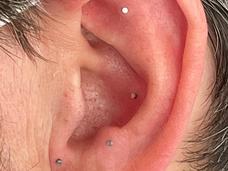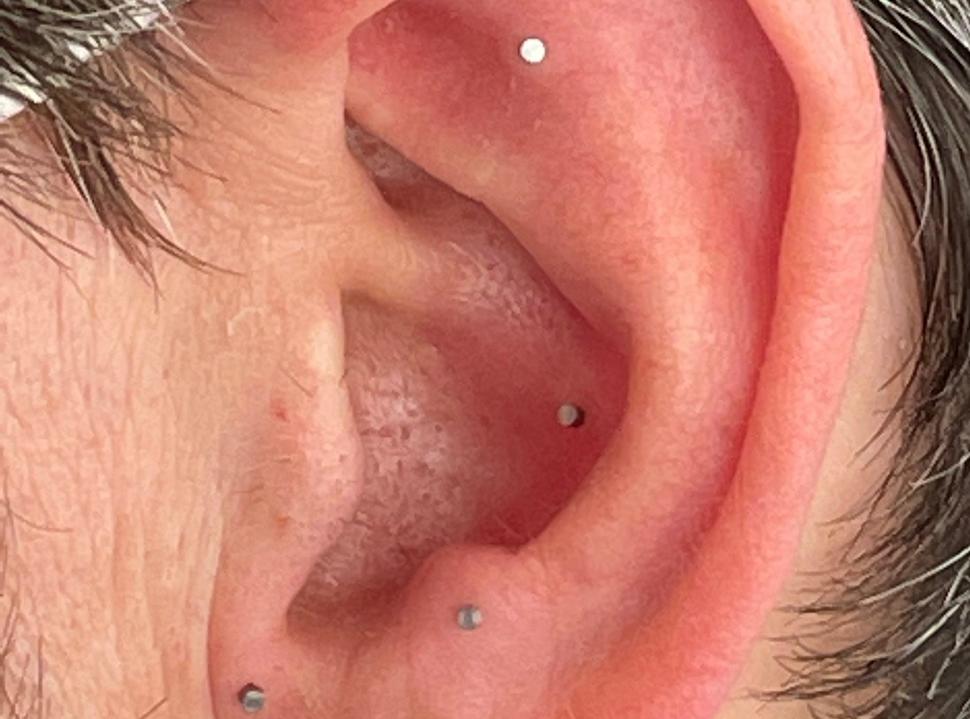, by NCI Staff
Two types of acupuncture may help reduce chronic pain in cancer survivors, results from a large clinical trial suggest. Cancer survivors who participated in the study reported modest improvements in pain after receiving acupuncture compared with those who received standard pain treatments.
Although several studies have found that acupuncture appears to reduce pain in people without cancer, the trial is one of the first large randomized clinical studies designed to test whether the therapy might offer relief for cancer-related pain in survivors of a host of different cancers.
The researchers who led this new trial acknowledged several factors that could have affected its results, including that there was no group of participants who received a placebo version of acupuncture. Other researchers not involved in the study also pointed out that the lack of a placebo “arm” of the trial makes it difficult to rule out the possibility that the pain improvements reported by those who received acupuncture were the result of a “placebo effect.”
The trial enrolled a broad group of cancer survivors with a history of breast, prostate, lymphoma, and other types of cancers and tested two types of acupuncture, which experts not involved in the trial said are strengths of the study.
“If I look specifically at cancer pain management for cancer survivors, this does add something new,” said Robert Swarm, M.D., chief of the Division of Pain Management at Washington University School of Medicine. “I think this study will be of interest to oncologists and others involved in the care of cancer survivors.”
The researchers wanted to compare the effectiveness of “battlefield acupuncture,” a type of auricular (ear) acupuncture developed by the Department of Veterans Affairs (VA) healthy system, with electroacupuncture, which is commonly used by licensed acupuncturists, and usual care for reducing cancer-related pain.
The advantage of auricular acupuncture, study leaders said, is that it’s easy to train health care professionals to administer.
In the trial, led by Jun Mao, M.D., chief of the Integrative Medicine Service at Memorial Sloan Kettering Cancer Center, participants who received electroacupuncture reported modestly better pain control than those treated with auricular acupuncture. Both types of acupuncture were superior to usual care. Overall, the decrease in pain lasted well beyond the last treatment session—up to 4 months, the researchers reported March 18 in JAMA Oncology.
“It’s very notable that effects of the acupuncture persisted over time,” said Heather Greenlee, N.D., Ph.D., director of Integrative Medicine Program of the Fred Hutchinson Cancer Research Center, who was not involved in the study but was an investigator on an earlier trial of acupuncture to reduce pain in women being treated for breast cancer.
“We observed a similar result in our trial: a fairly short course of acupuncture demonstrated sustained clinical effects on pain reduction,” Dr. Greenlee continued.
Compared with survivors who received electroacupuncture, participants who received auricular acupuncture were more likely to report side effects, primarily ear pain, and stop treatment because of side effects.
A Need for Nonpharmaceutical Pain Management
Studies suggest that 30% to 40% of cancer survivors experience chronic pain related to their cancer or its treatment. Researchers continue to test new ways of managing that pain, including pain medications and complementary medicine approaches like yoga and acupuncture.
“Cancer survivors grapple with whether to live with the pain or use medications such as anti-inflammatory drugs that may improve their pain but increase their risk of kidney injury and gastrointestinal bleeding,” said Dr. Mao.
Because of the opioid abuse epidemic, cancer survivors have reported encountering more barriers to these medications and are more concerned about addiction.
“Most of our patients who are on pain medications are trying to get off them,” said Matthew Weitzman, lead acupuncturist of the Integrative Medicine Service at Memorial Sloan Kettering Cancer Center.
“Some patients are on opiates, but there is definitely an awareness of the dangers of opiates, especially for long-term use. If these patients with chronic pain can find a different way to address that pain, they are pretty enthusiastic about that.”
Nonpharmaceutical treatments have another potential advantage, said Dr. Greenlee. “We don’t have to worry about acupuncture interfering with oncology treatments patients are receiving.”
Despite the appeal of nonpharmaceutical treatments, approaches like acupuncture have come under intense criticism from some researchers. Skeptics point to the fact that studies have failed to identify the biological mechanisms by which acupuncture works to alleviate pain and other problems. Other criticisms include the variability in how studies of acupuncture are conducted, from where needles are placed on the body to how placebo or sham procedures are performed.
Studies of acupuncture in humans to treat pain have had mixed results, with a number reporting that it can indeed help with problems like pain and nausea, while others have shown that it offers little to no improvement.
A 2017 expert report from an NCI-sponsored conference on the topic found that “acupuncture needling and manipulation produce a variety of physiological effects both centrally and peripherally in animal and human experiments.”
However, the report concluded that “significant scientific gaps remain in our understanding of the relationships between these mechanisms and the observed responses to acupuncture in clinical trials.”
Understanding the Trial Results
The trial led by Dr. Mao enrolled 360 participants, all of whom had a prior cancer diagnosis but no current evidence of cancer and had reported musculoskeletal pain related to their cancer for at least 3 months. Most participants were older and 70% were women.
Participants were randomly assigned to one of the two types of acupuncture or usual care for pain, which included pain medications, physical therapy, and steroids. Treatment involved 10 weekly sessions, and participants were then followed for an additional 16 weeks.
The primary outcome was self-reported pain intensity, based on a tool called the Brief Pain Inventory (BPI), which measures pain ranging from 0 (no pain) to 10 (worst pain imaginable). At the outset of the study, participants reported moderate pain (average of 5.2 points on the BPI) that had lasted an average of 5 years. About 60% used pain medication regularly.
Experienced licensed acupuncturists delivered both types of acupuncture. For the auricular acupuncture, they used the battlefield protocol developed by the VA health system, which involves placing up to five sterile stud-like needles in each ear and asking participants to walk around for a minute and then rate their pain severity.
“In many but not all cases, participants experienced immediate relief,” said Weitzman. Participants were told to keep the inserted studs in their ear(s) for 4 days and then remove them. “The idea is the continued stimulation on the points enhances the treatment effect,” Weitzman said.
The same acupuncturists delivered electroacupuncture by using a device that sends low-voltage electric currents through four needles inserted into acupuncture points near the areas of pain. Another four needles were inserted into more distant sites, Weitzman explained.
“Similar devices are used in physical therapy, where instead of using needles, the therapists use patches on the skin that sends a pulsing sensation into the muscles to help them relax,” he said.
Electroacupuncture reduced the pain severity by 1.9 points on the BPI and auricular acupuncture reduced the pain severity by 1.6 points during the 12-week study period.
The improvements in pain fell just short of the 2-point threshold typically thought to be clinically meaningful for patients, Dr. Swarm explained. But “even if there’s a slight benefit and the risk of adverse events is small, then it’s a reasonable undertaking,” he said.
About 11% of patients receiving auricular acupuncture stopped treatment because of side effects, compared with less than 1% of patients receiving electroacupuncture. The most common complaint in the auricular acupuncture group was ear pain, while in the electroacupuncture group it was bruising.
Although auricular acupuncture has shown some ability to reduce pain, “some patients may not tolerate it as well as other forms of acupuncture,” said Dr. Greenlee. “It’s important for us to understand what is acceptable to patients when we think about scaling up acupuncture interventions.”
The trial leaders also acknowledged that participants were not “blinded” to the treatment they received, which is considered an important way of limiting a possible placebo effect.
In this particular case, that’s largely unavoidable, Dr. Swarm noted. “It’s a common problem of studying this type of treatment modality.”
Ready for Broader Use in Managing Cancer Pain?
Scaling up acupuncture delivery was on Dr. Mao’s mind when he designed this study. Since 2016, the VA has trained more than 2,700 clinicians without formal acupuncture backgrounds to deliver battlefield acupuncture throughout its health system.
“This type [of acupuncture] can be taught to a physician in one day. I think we could adopt a similar model for cancer survivors across the country,” Dr. Mao said. Acupuncture could also provide an additional tool for pain management in areas that have been particularly hard hit by the opioid crisis, he said.








